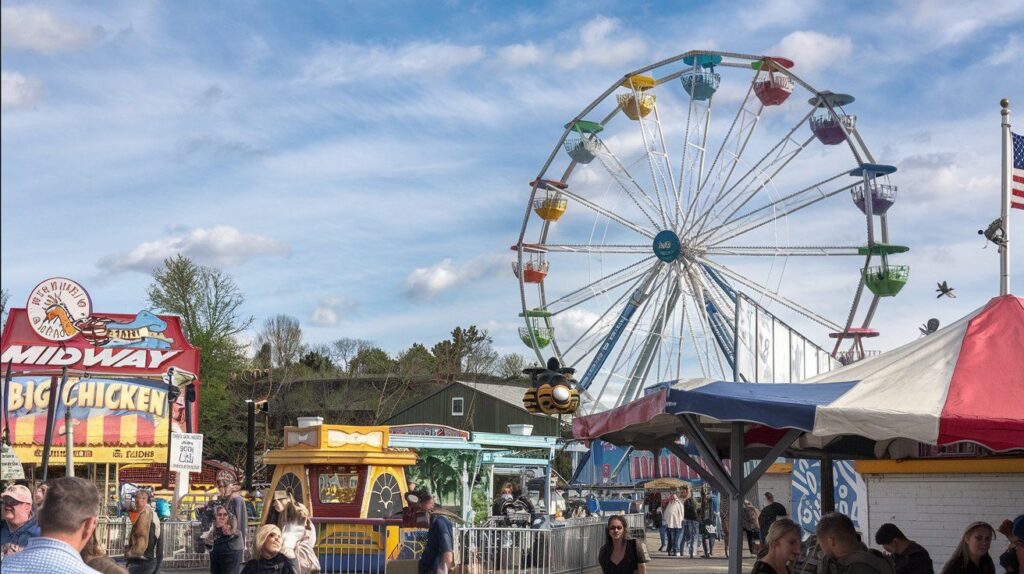
The sights, sounds, and smells of a bustling carnival or fair can transport us back to simpler times filled with laughter, excitement, and delicious treats. While both offer entertainment, food, and fun for all ages, there are some key distinctions that set them apart. Understanding these differences can help you decide which type of event best suits your interests and preferences. This article will delve into the unique characteristics of carnivals and fairs, exploring their attractions, activities, and overall purpose.
From thrilling rides to local crafts, we’ll uncover what makes each experience special. Whether you’re a thrill-seeker or a culture enthusiast, this guide will provide valuable insights into the world of carnivals and fairs.
Carnival Rides and Attractions
Carnivals are synonymous with exhilarating rides that push the boundaries of adrenaline. From towering roller coasters to dizzying spinning teacups, there’s something for every level of thrill-seeker. The heart of a carnival often lies in its midway, where classic attractions like Ferris wheels, bumper cars, and carousel horses offer timeless fun for all ages.
Beyond the rides, carnivals boast a variety of entertainment options. Live music performances, acrobatic shows, and magic acts add to the vibrant atmosphere. Many carnivals also feature interactive games and activities, such as shooting ranges, ring toss, and balloon darts, providing opportunities for friendly competition and prizes. The constant movement and energy of carnival rides and attractions create an immersive experience that’s hard to resist.
Fair Food and Agriculture
Fairs often celebrate the bounty of local agriculture with a wide array of food vendors showcasing regional specialties. From freshly baked pies and homemade jams to savory barbecue and juicy corn on the cob, fairs offer a delicious taste of the community’s culinary heritage.
Beyond food, fairs frequently feature agricultural exhibits showcasing livestock competitions, poultry shows, and horticultural displays. These exhibits provide educational opportunities for visitors to learn about farming practices, animal husbandry, and the importance of agriculture in our daily lives. The emphasis on local produce and craftsmanship at fairs fosters a sense of community pride and connection to the land.
Games of Chance
While both carnivals and fairs offer games of chance, they often differ in their focus and scale. Carnivals tend to feature more elaborate and high-stakes games, such as ring toss with large prizes or shooting galleries with challenging targets. The emphasis on winning big prizes adds an element of excitement and competition to the carnival experience.
Fairs, on the other hand, may offer simpler games of chance like bean bag toss or duck pond races, often with smaller prizes. These games are typically designed for all ages and provide a lighthearted opportunity for fun and interaction. The focus at fairs is often more on community engagement and entertainment rather than high-stakes gambling.
Local Community Focus
Fairs often serve as a platform to celebrate the local community and its achievements. They showcase the talents of local artisans, musicians, and performers, providing a stage for residents to share their skills and creativity with the wider public.
Many fairs also feature educational exhibits and demonstrations highlighting local history, culture, and traditions. This emphasis on community involvement fosters a sense of belonging and pride among residents, strengthening social bonds and promoting cultural exchange. The focus on local talent and heritage distinguishes fairs from carnivals, which tend to be more transient in nature.
Annual Events
While both carnivals and fairs can occur throughout the year, fairs often have a strong tradition of being annual events. This recurring celebration provides a sense of continuity and anticipation for the community, marking a significant date on the local calendar.
The annual nature of fairs allows them to evolve and adapt over time, incorporating new attractions, activities, and themes while preserving their core values. This blend of tradition and innovation ensures that fairs remain relevant and engaging for generations to come.
Conclusion
Understanding the difference between carnival and fair, or what is the difference between a carnival and a fair, allows us to appreciate the unique qualities each offers. Carnivals provide thrilling rides, games of chance, and entertainment spectacles, while fairs celebrate local agriculture, community pride, and cultural heritage. Whether you seek adrenaline-pumping excitement or a taste of hometown charm, both carnivals and fairs offer unforgettable experiences that capture the spirit of fun and togetherness.
